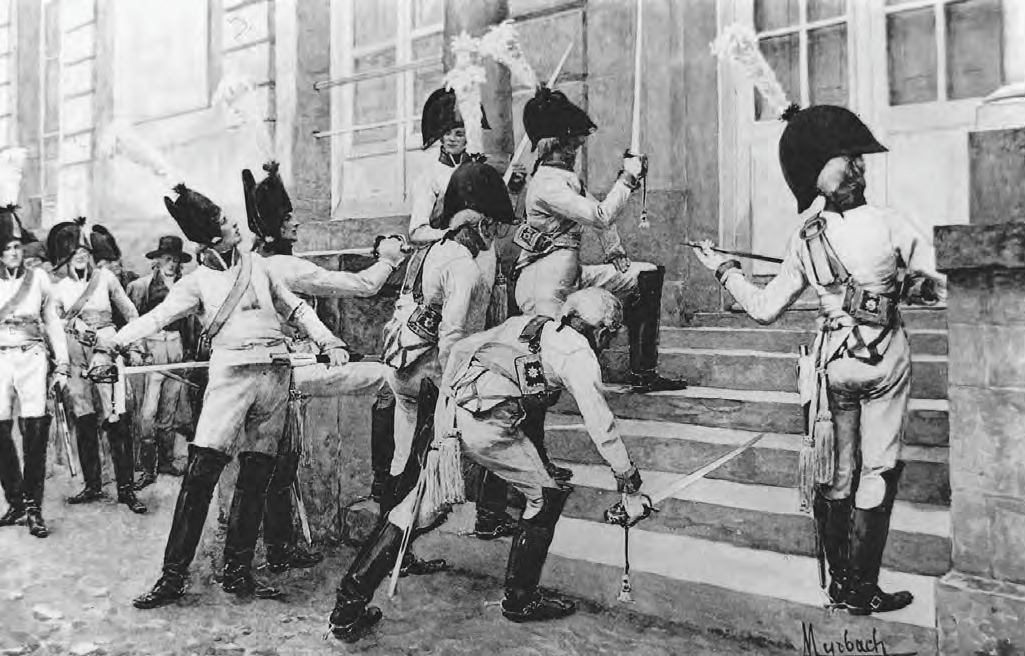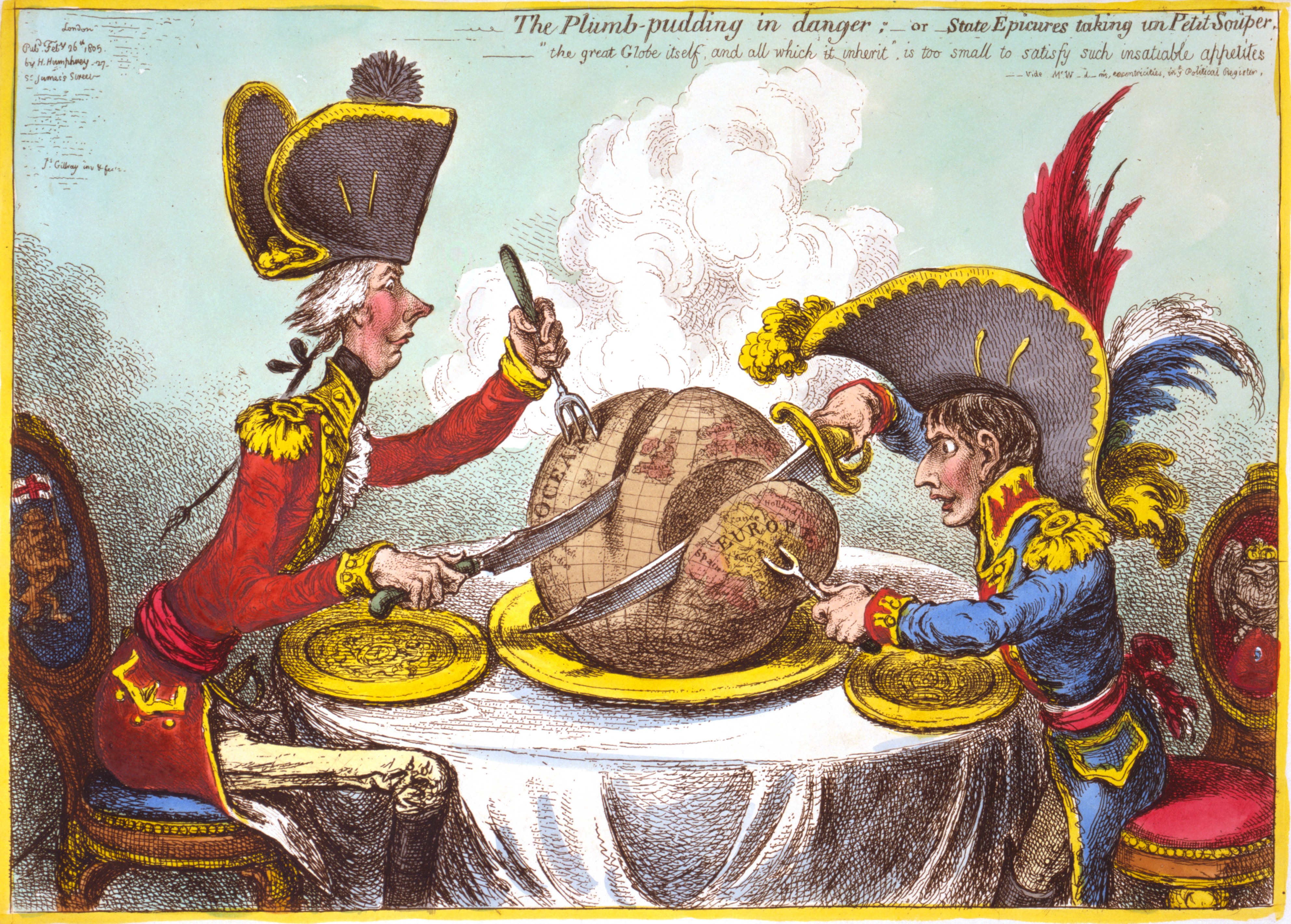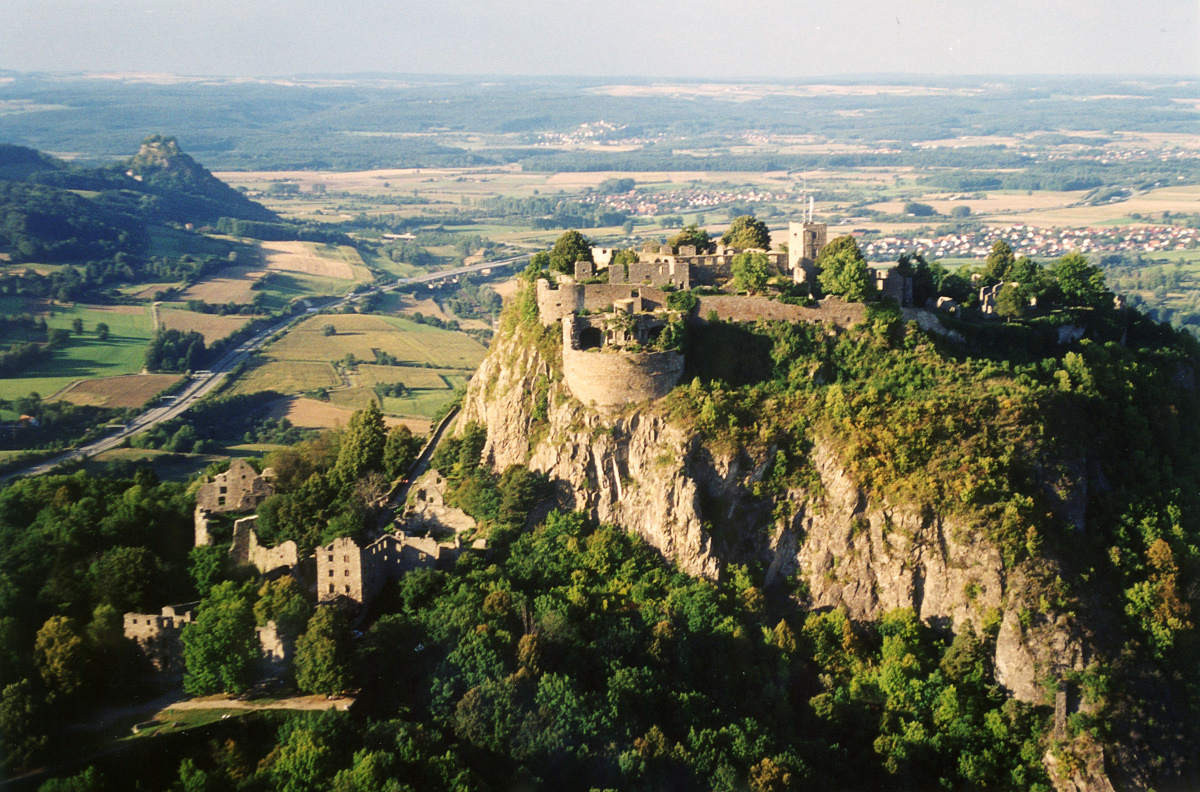|
Gouvion Saint-Cyr
Laurent de Gouvion Saint-Cyr, 1st Marquis of Gouvion-Saint-Cyr (; 13 April 1764 – 17 March 1830) was a French military commander in the French Revolutionary Wars, French Revolutionary and Napoleonic Wars who rose to the rank of Marshal of the Empire. He is regarded as Napoleon's finest commander in defensive warfare. Early life He was born Laurent Gouvion in Toul, Three Bishoprics (now Meurthe-et-Moselle), the eldest child of Jean-Baptiste Gouvion, a Tanning (leather), tanner, and his wife Anne-Marie Mercier. He adopted the name Saint-Cyr after his mother, who had abandoned him at an early age. He went to Rome when he was eighteen in order to study painting, but, although he continued his artistic studies after his return to Paris in 1784, he never adopted the profession of a Painting, painter. He married Anne Gouvion (Toul, 2 November 1775 - Paris, 18 June 1844) and had issue, including Laurent François, Marquis de Gouvion Saint-Cyr (30 December 1815 - 30 January 1904) ... [...More Info...] [...Related Items...] OR: [Wikipedia] [Google] [Baidu] |
Horace Vernet
Émile Jean-Horace Vernet (30 June 178917 January 1863), more commonly known as simply Horace Vernet, was a French Painting, painter of battles, portraits, and Orientalism, Orientalist subjects. Biography Vernet was born to Carle Vernet, another famous painter, who was himself a son of Claude Joseph Vernet. He was born in the Paris Louvre, while his parents were staying there during the French Revolution. Vernet quickly developed a disdain for the high-minded seriousness of academic French a work which was distinguished by art influenced by Classicism, and decided to paint subjects taken mostly from contemporary life. During his early career, when Napoleon Bonaparte was in power, he began depicting the France, French soldier in a more familiar, vernacular manner rather than in an idealized, Jacques-Louis David, Davidian fashion; he was just twenty when he exhibited the ''Taking of an Entrenched Camp'' Some other of his paintings that represent French soldiers in a more direct, les ... [...More Info...] [...Related Items...] OR: [Wikipedia] [Google] [Baidu] |
Battle Of Schliengen
At the Battle of Schliengen (24 October 1796), the French Army of the Rhine and Moselle under the command of Jean-Victor Moreau and the Austrian army under the command of Archduke Charles of Austria both claimed victories. The village of Schliengen lies in the present-day Kreis Lörrach close to the border of present-day Baden-Württemberg (Germany), the Haut-Rhin (France), and the Canton of Basel-Stadt (Switzerland). During the French Revolutionary Wars, Schliengen was a strategically important location for the armies of both Republican France and Habsburg Austria. Control of the area gave either combatant access to southwestern German states and important Rhine crossings. On 20 October Moreau retreated from Freiburg im Breisgau and established his army along a ridge of hills. The severe condition of the roads prevented Archduke Charles from flanking the French right wing. The French left wing lay too close to the Rhine to outflank, and the French center, positioned in a ... [...More Info...] [...Related Items...] OR: [Wikipedia] [Google] [Baidu] |
Siege Of Roses (1808)
The siege of Roses or Siege of Rosas from 7 November to 5 December 1808 saw an Imperial French corps led by Laurent Gouvion Saint-Cyr invest a Catalan and Spanish garrison commanded by Peter O'Daly. After a siege lasting a month in which the haven and town of Roses was captured and the nearby Trinity Castle invested by over 13,000 French and Italian infantry, artillery and cavalry with heavy siege trains on the hills above, the Citadel was surrendered to the Napoleonic forces. Roses (Rosas) is located northeast of Girona, Catalonia, Spain. The action occurred during the Peninsular War, part of the Napoleonic Wars. In the summer and fall of 1808, an Imperial French corps under Guillaume Philibert Duhesme was isolated in Barcelona by a 24,000-man Spanish army led by Juan Miguel de Vives y Feliu. With 23,000 men, Gouvion Saint-Cyr moved from the French border to relieve Duhesme's troops. The first obstacle to Gouvion Saint-Cyr's mission was the haven of Roses defended by a la ... [...More Info...] [...Related Items...] OR: [Wikipedia] [Google] [Baidu] |
Peninsular War
The Peninsular War (1807–1814) was the military conflict fought in the Iberian Peninsula by Spain, Portugal, and the United Kingdom against the invading and occupying forces of the First French Empire during the Napoleonic Wars. In Spain, it is considered to overlap with the Spanish War of Independence. The war started when the French and Spanish armies invaded and occupied Portugal in 1807 by transiting through Spain, and it escalated in 1808 after Napoleonic France occupied Spain, which had been its ally. Napoleon Bonaparte forced the abdications of Ferdinand VII and his father Charles IV and then installed his brother Joseph Bonaparte on the Spanish throne and promulgated the Bayonne Constitution. Most Spaniards rejected French rule and fought a bloody war to oust them. The war on the peninsula lasted until the Sixth Coalition defeated Napoleon in 1814, and is regarded as one of the first wars of national liberation. It is also significant for the emergence of larg ... [...More Info...] [...Related Items...] OR: [Wikipedia] [Google] [Baidu] |
War Of The Fourth Coalition
The Fourth Coalition fought against Napoleon's French Empire and were defeated in a war spanning 1806–1807. The main coalition partners were Prussia and Russia with Saxony, Sweden, and Great Britain also contributing. Excluding Prussia, some members of the coalition had previously been fighting France as part of the Third Coalition, and there was no intervening period of general peace. On 9 October 1806, Prussia declared war on France and joined a renewed coalition, fearing the rise in French power after the defeat of Austria and establishment of the French-sponsored Confederation of the Rhine in addition to having learned of French plans to cede Prussian-desired Hannover to Britain in exchange for peace. Prussia and Russia mobilized for a fresh campaign with Prussia massing troops in Saxony. Napoleon decisively defeated the Prussians in an expeditious campaign that culminated at the Battle of Jena–Auerstedt on 14 October 1806. French forces under Napoleon occupied Prus ... [...More Info...] [...Related Items...] OR: [Wikipedia] [Google] [Baidu] |
Invasion Of Naples (1806)
The Invasion of Naples was a front during the War of the Third Coalition, in 1806, when an army of the French Empire led by Marshal André Masséna marched from northern Italy into the Kingdom of Naples, an ally of the Coalition against France ruled by King Ferdinand IV. The Neapolitan army was vanquished at Campo Tenese and rapidly disintegrated. The invasion was eventually successful despite some setbacks, including the prolonged Siege of Gaeta, the British victory at Maida, and a stubborn guerrilla war by the peasantry against the French. Total success eluded the French because Ferdinand withdrew to his domain in Sicily where he was protected by the Royal Navy and a British Army garrison. In 1806 Emperor Napoleon appointed his brother Joseph Bonaparte to rule over southern Italy as king. The proximate cause of the invasion was Ferdinand's double-crossing of Napoleon. Wanting to keep things quiet in southern Italy, Napoleon and Ferdinand signed a convention that specified th ... [...More Info...] [...Related Items...] OR: [Wikipedia] [Google] [Baidu] |
Battle Of Castelfranco Veneto
In the Battle of Castelfranco Veneto (24 November 1805), two divisions of the French Army of Italy confronted an Austrian brigade led by Prince Louis Victor de Rohan-Guéméné. The Austrians had made a remarkable march from deep in the Alps to the plains of northern Italy. But, caught between the divisions of Jean Reynier and Laurent Gouvion Saint-Cyr, Rohan surrendered his command after failing to fight his way out. The event occurred during the War of the Third Coalition, part of the Napoleonic Wars. Castelfranco Veneto is located northwest of Venice. The Ulm Campaign of October 1805 resulted in an Austrian disaster when the Grande Armée of Napoleon enveloped and destroyed most of its units. Afterward, only Michael von Kienmayer's fleeing corps and a newly arriving Russian army under Mikhail Kutuzov stood between Napoleon and the Austrian capital of Vienna. After hearing the news of Ulm, the main army of Archduke Charles, Duke of Teschen began withdrawing from northern Ita ... [...More Info...] [...Related Items...] OR: [Wikipedia] [Google] [Baidu] |
War Of The Third Coalition
The War of the Third Coalition) * In French historiography, it is known as the Austrian campaign of 1805 (french: Campagne d'Autriche de 1805) or the German campaign of 1805 (french: Campagne d'Allemagne de 1805) was a European conflict spanning the years 1805 to 1806. During the war, France and its client states under Napoleon I opposed an alliance, the Third Coalition, made up of the United Kingdom, the Holy Roman Empire, the Russian Empire, Naples, Sicily and Sweden. Prussia remained neutral during the war. Britain had already been at war with France following the breakdown of the Peace of Amiens and remained the only country still at war with France after the Treaty of Pressburg. From 1803 to 1805, Britain stood under constant threat of a French invasion. The Royal Navy, however, secured mastery of the seas and decisively destroyed a Franco-Spanish fleet at the Battle of Trafalgar in October 1805. The Third Coalition itself came to full fruition in 1804–05 as Napole ... [...More Info...] [...Related Items...] OR: [Wikipedia] [Google] [Baidu] |
War Of The Oranges
The War of the Oranges ( pt, Guerra das Laranjas; french: Guerre des Oranges; es, Guerra de las Naranjas) was a brief conflict in 1801 in which Spanish forces, instigated by the government of France, and ultimately supported by the French military, invaded Portugal. It was a precursor to the Peninsular Wars, resulting in the Treaty of Badajoz, the loss of Portuguese territory, in particular Olivenza, as well as ultimately setting the stage for the complete invasion of the Iberian Peninsula by French forces. Background In 1800, First Consul Bonaparte and his ally, the Spanish prime-minister and Generalissimo Manuel de Godoy, sent an ultimatum to Portugal, the last British ally on the continent, demanding that she break her alliance with Britain. Portugal refused to cede, and, in April 1801, French troops arrived in the country. They were bolstered by Spanish troops under the command of Manuel de Godoy. Godoy had, under his command, the Spanish Army of Extremadura, with fiv ... [...More Info...] [...Related Items...] OR: [Wikipedia] [Google] [Baidu] |
Battle Of Biberach (1800)
The Battle of Biberach on 9 May 1800 saw a French First Republic corps under Laurent Gouvion Saint-Cyr engage part of a Habsburg Austrian army led by Pál Kray. After an engagement in which the Austrians suffered twice as many casualties as the French, Kray withdrew to the east. The combat occurred during the War of the Second Coalition, part of the French Revolutionary Wars. Biberach an der Riss is located southwest of Ulm. In late April 1800, a French army under the command of Jean Victor Marie Moreau crossed the Rhine river near Basel. At Stockach and Engen on 3 May, Moreau captured Kray's base of supplies and forced him into retreat. Two days later, Kray confronted his pursuers at Battle of Messkirch but was beaten again. On the 9th, the corps of Gouvion Saint-Cyr caught up with a part of Kray's army and the two sides battled again. Background Although the First Coalition forces achieved several initial victories at Verdun, Kaiserslautern, Neerwinden, Mainz, Amb ... [...More Info...] [...Related Items...] OR: [Wikipedia] [Google] [Baidu] |
Battle Of Messkirch
The Battle of Meßkirch was fought on 4 May 1800 and 5 May 1800 and resulted the victory of French army against the Austrians.The battle is referred to in some sources as the Battle of Moeskirch and as the Battle of Möskirch. Overview ''See the Messkirch 1800 Order of Battle for details of the French and Austrian armies in the campaign.'' On 25 April 1800, the French '' Armée d'Allemagne'', under Jean Victor Marie Moreau, crossed the Rhine River at Kehl and Schaffhausen. The 1st Demi-Brigade, of the Corps led by Laurent de Gouvion-Saint-Cyr, conquered St. Georgen and entered the Black Forest at Freiburg im Breisgau. After conquering Stuhlingen, 25 km south of Donaueschingen, the unit took part in the Battle of Stockach and Engen on 3 May 1800, after which the Austrian retreated to Meßkirch where they enjoyed a more favourable defensive position. The French repeatedly assaulted the town on 4 May 1800 and 5 May 1800, both attempts being in vain. The 1st Demi-Briga ... [...More Info...] [...Related Items...] OR: [Wikipedia] [Google] [Baidu] |
Battle Of Stockach (1800)
The Battles of Stockach and Engen were fought on 3 May 1800 between the army of the First French Republic under Jean Victor Marie Moreau and the army of the Habsburg monarchy led by Paul Kray. The fighting near Engen, Germany, Engen resulted in a stalemate. However, while the two main armies were engaged at Engen, Claude Lecourbe captured Stockach from its Austrian defenders (the latter commanded by Joseph, Prince of Lorraine-Vaudemont). The loss of his main supply base at Stockach compelled Kray to order a retreat. Stockach is located near the northwestern end of Lake Constance while Engen is west of Stockach. The action occurred during the War of the Second Coalition, part of the French Revolutionary Wars. Background ''See the Messkirch 1800 Order of Battle for details of the French and Austrian armies in the campaign.'' Plans At the beginning of 1800 the armies of France and the Habsburgs faced each other across the Rhine. Feldzeugmeister Paul Kray led approximately 120,000 ... [...More Info...] [...Related Items...] OR: [Wikipedia] [Google] [Baidu] |





